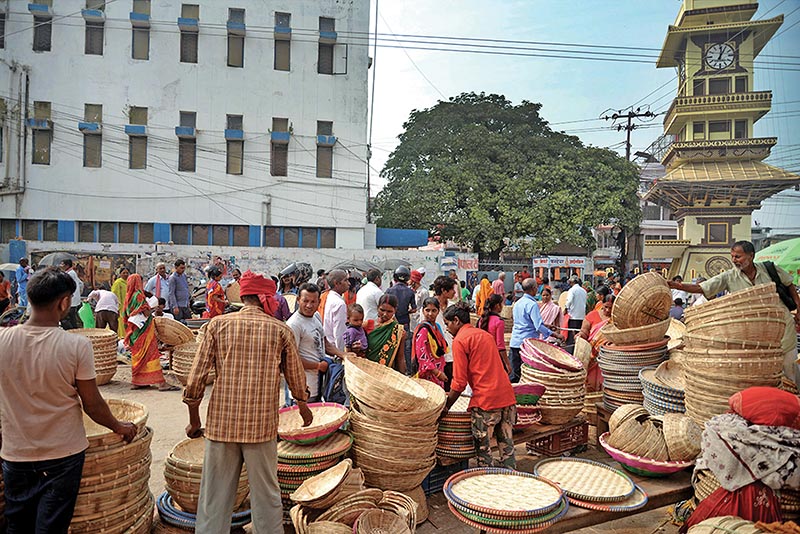Chhath festival begins today
Janakpurdham, October 30
Rituals associated with Chhath festival are commencing from tomorrow. Chhath is a festival mainly dedicated to the Sun God.
It is a religious festival to express gratitude to nature. The sun is especially worshipped amidst various rituals with different kinds of offerings.
Main rituals of the festival, observed in succession in a period of four days, include Arba-Arbain, kharana, offering argha to the setting sun and also offering argha to the rising sun.
Arba-Arbain ritual is observed on the first day which falls tomorrow. This ritual is also called nahaya-khaya. Devotees start observing fast from this day and abstain from eating meat and fish, onion, garlic, millet and lentils. They take holy dips in ponds and rivers on this day in the early morning and start the fast.
On the second day (panchami), kharana ritual is observed, which is also known as ‘reduction of sins’. The place where the Chhath rituals are conducted is daubed with a mixture of cow dung and water. A paste prepared by mixing rice flour and holy water is sprinkled over the place and the altar for performing Chhath rituals.
The devotees observe a complete fast on this day without drinking even water. They offer payas (rice pudding) to the moon and partake this offering.
On the third day of the festival, various delicacies are prepared from flour of rice and wheat grains ground in traditional grinders (okhal, jaanto or dhiki). All family members go to the water bodies — ponds or the banks of the river, carrying a variety of offerings, amidst singing of devotional and folk songs.
They offer delicacies such as thakuwa, bhusawa, khajuri, perukiya and fruits such as coconut, banana, citrus fruits, and other articles such as nanglo, koniya, saraba and dhakan, among others. These offerings are all carried in a big basket. Before placing offerings at the banks of a river or pond, the devotees prostrate five times in front of the spot. Devotees draw ‘aripan’ sketches as per tantric methods at the place of offering to sanctify it. Thereafter, the devotees step into the water of the pond or the river and worship the setting sun by making the offerings.
Parvan rituals are observed on the fourth day or the last day of the Chhath festival. On this day, the devotees go to the banks of the pond or the river, specially anointed for the rituals in the early morning.
They repeat the rituals conducted in the previous evening and make offerings of argha to the rising sun. After the argha rituals, the devotees listen to the chanting of Surya Purana scripture by priests. They also listen to and narrate the story related to Chhath fasting.
As per the myth, human civilisation developed on the river banks and the sun and water are the most essential elements out of the five main elements that sustain life on earth.
Chhath festival is an occasion to pay obeisance to these five elements. Sun worship is the main theme of this festival and it embodies the message of mutual goodwill, unity and co-existence. The sun is the basis of existence of life, nature, planets, constellations and time.
The festival also celebrates the life-sustaining energy of the sun and the Chhathi goddess. So both the sun god and chhathi goddess are worshipped during the Chhath festival.
Worshipping the male and female forms on this occasion means showing respect to the natural form of creation of life on earth.
The sun is also considered the god of health and prosperity.
The fasting observed during this festival is considered one of the most rigorous form of fasting. Chhath festival, which used to be observed only in the Mithilanchal region in the past, is celebrated in the hilly areas and other regions of the country for many years as its popularity continues to grow in Nepali society.






